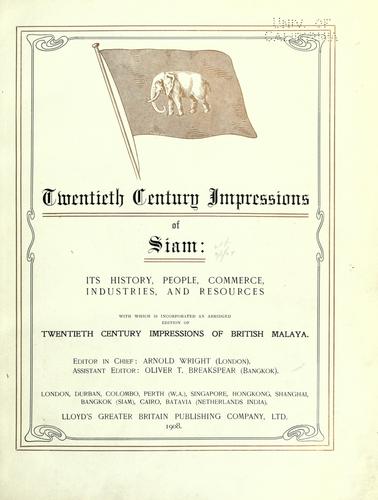
The 1908 book "
Twentieth century impressions of Siam", edited by Arnold Wright and published in 1908 was recently scanned and made online by archive.org. The section about the administrative system, which by that year had the
thesaphiban reforms implemented all over the country, reads as following
In 1894 the internal administration was reorganised, and the whole of the country placed under the administration of the Ministry of the Interior with the exception of the capital and the surrounding provinces. An Act similar to the British Act applying to Burma has been adopted for the government of the great mass of the people in the provinces of the interior. Each hamlet, consisting of about ten houses, has its elected elder. The elders in their turn elect a headman for the village, a village consisting of ten hamlets. The Government appoints an "amphur" with petty magisterial powers who has jurisdiction over a group of villages. "Muangs," or provinces, are each in the charge of a governor, and the governors are in their turn directly responsible to the High Commissioners, who are at the head of the thirteen monthons, or circles, into which the country is divided.
The Commissioners meet once a year at the Ministry of Justice, and, under the presidency of the Minister of the Interior, report upon the work that has been accomplished and discuss the future programme. Gradually this assembly of the High Commissioners is becoming quite an important feature in the government of the country.
 The 1908 book "Twentieth century impressions of Siam", edited by Arnold Wright and published in 1908 was recently scanned and made online by archive.org. The section about the administrative system, which by that year had the thesaphiban reforms implemented all over the country, reads as following
The 1908 book "Twentieth century impressions of Siam", edited by Arnold Wright and published in 1908 was recently scanned and made online by archive.org. The section about the administrative system, which by that year had the thesaphiban reforms implemented all over the country, reads as following 
1 comment:
I downloaded and had a look. The book has a lot of content, but unfortunately, the book's formatting did not survive well the scanning process. It is a tough read. I hope that someone manually reformats and reissues.
Post a Comment